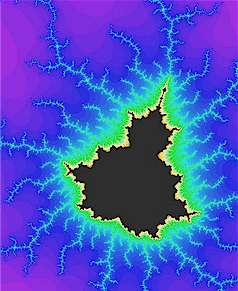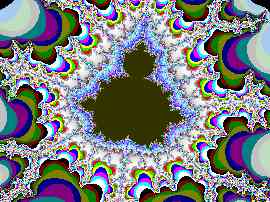Hocine BEKKOUCHE
Image compression is minimizing the size in bytes of a graphics file without degrading the quality of the image to an unaccceptable level. The reduction in file size allows more images to be stored in a given amount of disk or memory space. It also reduces the time required for images to be sent over the Internet or downloaded from Web pages.
There are several different ways in which image files can be compressed. For Internet use, the two most common compressed graphic image formats are the JPEG format and the GIF format. The JPEG method is more often used for photographs, while the GIF method is commonly used for line art and other images in which geometric shapes are relatively simple.
Other techniques for image compression include the use of fractals and wavelets. These methods have not gained widespread acceptance for use on the Internet as of this writing. However, both methods offer promise because they offer higher compression ratios than the JPEG or GIF methods for some types of images. Another new method that may in time replace the GIF format is the PNG format.
A text file or program can be compressed without the introduction of errors, but only up to a certain extent. This is called lossless compression. Beyond this point, errors are introduced. In text and program files, it is crucial that compression be lossless because a single error can seriously damage the meaning of a text file, or cause a program not to run. In image compression, a small loss in quality is usually not noticeable. There is no "critical point" up to which compression works perfectly, but beyond which it becomes impossible. When there is some tolerance for loss, the compression factor can be greater than it can when there is no loss tolerance. For this reason, graphic images can be compressed more than text files or programs.
JPEG
A JPEG (pronounced JAY-peg) is a graphic image file created by choosing from a range of compression qualities (actually, from one of a suite of compression algorithms). When you create a JPEG or convert an image from another format to a JPEG, you are asked to specify the quality of image you want. Since the highest quality results in the largest file, you can make a trade-off between image quality and file size. Formally, the JPEG file format is ISO standard 10918. The JPEG scheme includes 29 distinct coding processes although a JPEG implementor may not use them all. JPEG is an acronym for Joint Photographic Experts Group, the committee that established the baseline algorithms. Together with the Graphic Interchange Format (GIF) and Portable Network Graphics (PNG) file formats, the JPEG is one of the image file formats supported on the World Wide Web, usually with the file suffix of "jpg". You can create a progressive JPEG that is similar to an interlaced GIF.
Read more about it at: http://www.jpeg.org
Progressive JPEG
A progressive JPEG is the JPEG equivalent of the interlaced GIF Graphics Interchange Format. It's an image created using the JPEG suite of compression algorithms that will "fade in" in successive waves of lines until the entire image has completely arrived. Like the interlaced GIF, a progressive JPEG is a more appealing way to deliver an image at modem connection speeds. Users with faster connections are not likely to notice the difference.
GIF
The GIF (the original and preferred pronunciation is DJIF; it stands for Graphics Interchange Format) is one of the two most common file formats for graphic images on the World Wide Web. The other is the JPEG.
On the Web and elsewhere on the Internet (for example, bulletin board services), the GIF has become a de facto standard form of image. The LZW compression algorithm used in the GIF format is owned by Unisys, and companies that make products that exploit the algorithm (including the GIF format) need to license its use from Unisys. In practice, Unisys has not required users of GIF images to obtain a license, although their licensing statement indicates that it is a requirement. Unisys says that getting a license from them does not necessarily involve a fee.
The GIF uses the 2D raster data type and is encoded in binary. There are two versions of the format, 87a and GIF89a. Version 89animated GIF, which is a short sequence of images within a single GIF a (July, 1989) allows for the possibility of an file GIF presentation. . A GIF89a can also be specified for interlaced
A patent-free replacement for the GIF, the Portable Network Graphics (PNG) format, has been developed by an Internet committee and major browsers support it or soon will. Meanwhile, many GIF downloaders and Web site builders on the Web continue to be ignorant of or indifferent to the requirement to get a license from Unisys for the use of their algorithm
FRACTALS
"Fractal Geometry plays two roles. It is the geometry of deterministic chaos and it can also describe the geometry of mountains, clouds and galaxies." - Benoit Mandelbrot
The term "fractal" was coined by Benoit Mandelbrot in 1975. It comes from the Latin fractus, meaning an irregular surface like that of a broken stone. Fractals are non-regular geometric shapes that have the same degree of non-regularity on all scales. Just as a stone at the base of a foothill can resemble in miniature the mountain from which it originally tumbled down, so are fractals self-similar whether you view them from close up or very far away.
Fractals are the kind of shapes we see in nature. We can describe a right triangle by the Pythagorean theorem, but finding a right triangle in nature is a different matter altogether. We find trees, mountains, rocks and cloud formations in nature, but what is the geometrical formula for a cloud? How can we determine the shape of a dollup of cream in a cup of coffee? Fractal geometry, chaos theory, and complex mathematics attempt to answer questions like these. Science continues to discover an amazingly consistent order behind the universe's most seemingly chaotic phenomena.
Mathematicians have attempted to describe fractal shapes for over one hundred years, but with the processing power and imaging abilities of modern computers, fractals have enjoyed a new popularity because they can be digitally rendered and explored in all of their fascinating beauty. Fractals are being used in schools as a visual aid to teaching math, and also in our popular culture as computer-generated surfaces for landscapes and planetary surfaces in the movie industry.
Here are some...


WAVELTS
A wavelet is a mathematical function useful in digital signal processing and image compression. The use of wavelets for these purposes is a recent development, although the theory is not new. The principles are similar to those of Fourier analysis, which was first developed in the early part of the 19th century.
In signal processing, wavelets make it possible to recover weak signals from noise. This has proven useful especially in the processing of X-ray and magnetic-resonance images in medical applications. Images processed in this way can be "cleaned up" without blurring or muddling the details.
In Internet communications, wavelets have been used to compress images to a greater extent than is generally possible with other methods. In some cases, a wavelet-compressed image can be as small as about 25 percent the size of a similar-quality image using the more familiar JPEG method. Thus, for example, a photograph that requires 200 KB and takes a minute to download in JPEG format might require only 50 KB and take 15 seconds to download in wavelet-compressed format.
Wavelet compression works by analyzing an image and converting it into a set of mathematical expressions that can then be decoded by the receiver. A wavelet-compressed image file is often given a name suffix of "WIF." Either your browser must support these files or it will require a plug-in program to read the fles.
Wavelet compression is not yet widely used on the Web. The most common compressed image formats remain the Graphics Interchange Format (GIF), used mainly for drawings, and JPEG, used mainly for photographs.
PNG
PNG (pronounced ping as in ping-pong; for Portable Network Graphics) is a file format for image compression that, in time, is expected to replace the Graphics Interchange Format (GIF) that is widely used on today's Internet. Owned by Unisys, the GIF format and its usage in image-handling software involves licensing or other legal considerations. (Web users can make, view, and send GIF files freely but they can't develop software that builds them without an arrangement with Unisys.) The PNG format, on the other hand, was developed by an Internet committee expressly to be patent-free. It provides a number of improvements over the GIF format.
Like a GIF, a PNG file is compressed in lossless fashion (meaning all image information is restored when the file is decompressed during viewing). A PNG file is not intended to replace the JPEG format, which is "lossy" but lets the creator make a trade-off between file size and image quality when the image is compressed. Typically, an image in a PNG file can be 10 to 30% more compressed than in a GIF format.
The PNG format includes these features:
Unlike the GIF89a, the PNG format doesn't support animation since it can't contain multiple images. The PNG is described as "extensible," however. Software houses will be able to develop variations of PNG that can contain multiple, scriptable images.
LOSSLESS COMPRESSION
ISO (International Organization for Standardization ), founded in 1947, is a worldwide federation of national standards bodies from some 100 countries, one from each country. Among the standards it fosters is Open Systems Interconnection (OSI), a universal reference model for communication protocols. Many countries have national standards organizations such as the American National Standards Institute (ANSI) that participate in and contribute to ISO standards making.
"ISO" is not an abbreviation. It is a word, derived from the Greek isos, meaning "equal", which is the root for the prefix "iso-" that occurs in a host of terms, such as "isometric" (of equal measure or dimensions) and "isonomy" (equality of laws, or of people before the law). The name ISO is used around the world to denote the organization, thus avoiding the assortment of abbreviations that would result from the translation of "International Organization for Standardization" into the different national languages of members. Whatever the country, the short form of the Organization's name is always ISO.
Read more about it at:The ISO home page is called ISO Online .